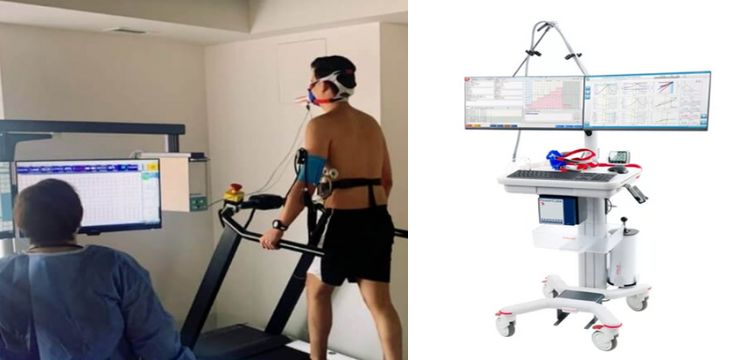Cardio-Pulmonary Exercise Testing (CPET)
Cardio-Pulmonary exercise testing (CPET) also referred to as a VO2 (oxygen consumption) test, is a specialized type of stress test or exercise test that gives information about the condition of heart and lungs. It also measures your exercise capacity which makes it superior compared to the usual Tread-mill Test. CPET is widely used to rule out coronary artery disease (heart blockages) as a screening test and many a times it is a part of cardiac rehabilitation after an event of MI (Heart attack), after angioplasty or bypass surgery to assess the response to therapy.

Why should I perform Cardio-Pulmonary exercise testing (CPET)?
There are many common reasons CPET is performed including to:How do I prepare for testing?
What can I expect during testing?
The testing will start with pulmonary function tests (PFTs), including spirometry. Then you prepare for the exercise portion of the test. You will have ECG leads (wires attached to stickers) on the chest. A blood pressure cuff will be placed on the upper arm. You will wear a pulse oximeter (measures the saturation of oxygen to your blood) on your finger. You will wear a mouthpiece or a mask that is strapped to the head during testing and you will breathe through a flow meter with tubing attached. This is a device that measures how deeply and fast you breathe, in addition to the oxygen and carbon dioxide that flow in and out.
You will then be given instructions based on the exercise you will perform. For the first 2-3 minutes, information is collected while you are at rest. Next a warm-up will begin. This is a walk on the treadmill. After a 2–3 minute warm-up, the exercise portion of the test will begin.
Depending on the test protocol, you may walk at a faster pace or run on the treadmill while the incline is increased. The goal is for the exercise to become progressively harder until the point that you are no longer able to continue, with the entire exercise period generally lasting 8-12 minutes. The staff supervising your test may talk to you during testing with some encouragement or reminders about what to do. When you can no longer continue because of exhaustion the test is over but you will continue to slowly walk as part of a cool down period. After the cool down you will be able to sit down, get a drink of water, and the equipment will be removed.
When will I get my test results?
During the test, the information describing your heart and lungs responses to exercise is collected continuously and is generally averaged over 20-30 second intervals. Thus, there are large amounts of data and these tests take time for the staff and doctor to review.